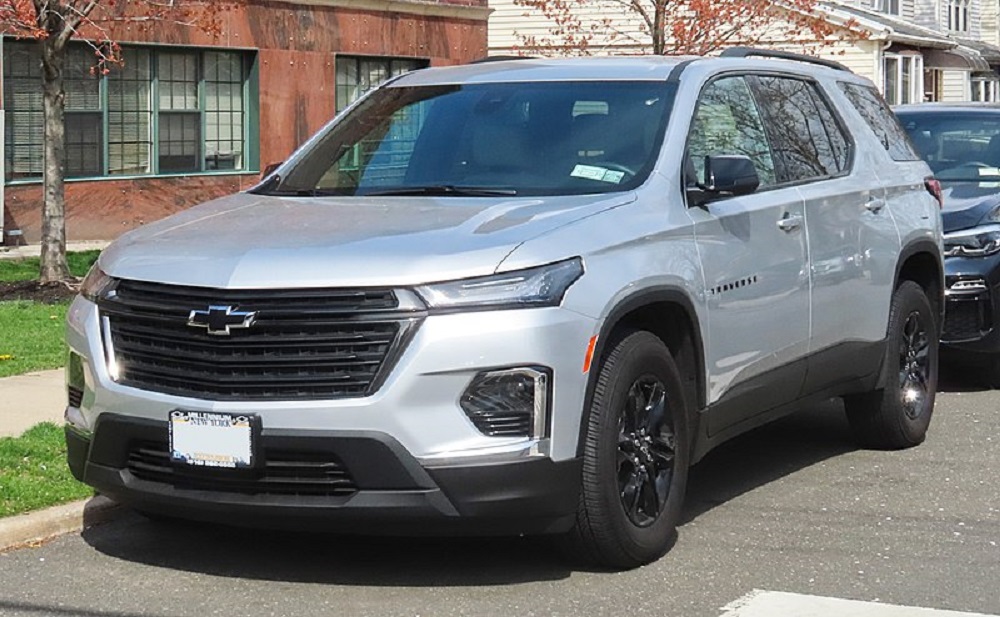Dealing with power window problems in your Chevy Traverse can be incredibly irritating, especially when they fail at the worst times.
Whether it’s unresponsive switches, windows that only work sometimes, or other electrical glitches, these issues can disrupt your daily routine and lead to costly repairs.
The good news is that knowing the common causes of these window switch problems can help you find solutions faster and keep your Traverse running smoothly. Let’s dive into the issues and what you can do to fix them.

1. Unresponsive Power Window Switches
One of the most frequent issues is unresponsive window switches, particularly on the driver’s side. Pressing the switch often results in no movement, leaving the window stuck.
This problem typically arises from worn-out components within the switch, preventing proper electrical contact. In other cases, loose or corroded wiring inside the door can block signals between the switch and the motor.
Over time, regular door use can damage the wiring in the door harness, leading to broken connections.
This issue is commonly reported in 2009-2012 models. Some owners have found that replacing the switch assembly resolves the problem, while others have traced the fault to damaged wiring.
In some instances, cleaning the contacts within the switch provided a temporary fix, suggesting contamination or wear was the culprit.
2. Intermittent Window Operation
Many Traverse owners experience windows that work sporadically, functioning one moment and failing the next. This inconsistency can affect one or more windows, creating a significant reliability issue.
The root cause often lies in worn or dirty switch contacts, which lead to unreliable connectivity. Moisture inside the door panel can also cause corrosion or short circuits, further disrupting the switch’s operation. A failing window motor may also present the same symptoms.
This issue is prevalent in 2013-2017 models, with drivers noting more frequent problems during rainy or humid conditions. Replacing the window switch or improving moisture sealing inside the door sometimes resolved the issue.
3. Master Window Switch Failure
Another issue is when the master window switch on the driver’s door stops controlling one or more passenger windows, even though the individual door switches still work.
This is often due to a malfunction in the master switch’s electronics, preventing the signal from reaching the window motors. Faulty wiring between the master switch and passenger doors can cause communication breakdowns.
This problem is reported primarily in 2010-2015 models. Many owners found that replacing the master switch fixed the issue. However, some technicians discovered broken wires in the flexible boot between the driver’s door and the body, where frequent movement causes wear.
4. Physical Damage or Wear to Window Switches
For some Traverse owners, the problem is physical wear rather than an electrical issue. Over time, the window switches can degrade, with buttons becoming stuck, loose, or even breaking off entirely, making it impossible to operate the windows.
This problem is most common in 2009-2014 models. Owners have described buttons that don’t return to their original position after being pressed or that crack from regular use. In most cases, the entire switch assembly needs to be replaced to restore operation.
5. Auto-Up/Auto-Down Feature Malfunction
The auto-up/auto-down feature, designed to make window operation more convenient, can sometimes malfunction.
Sometimes, the window stops before fully opening or closing, or the feature becomes entirely unresponsive. These issues often originate from faulty switch programming or a loss of calibration, particularly after a battery disconnect.
Traverse models from 2015 to 2019 are most affected by this issue. Many owners found that holding the window switch up for a few seconds after the window was fully closed reset the system.
A dealership reprogramming or replacing the switch module is usually needed if this reset doesn’t work.
6. Electrical System Issues Impacting Window Switches
Power window problems are sometimes part of more extensive electrical system failures that affect other components, such as door locks or interior lights.
These issues can be traced to blown fuses, faulty relays, or problems with the Body Control Module (BCM), which controls many of the vehicle’s electronic functions.
Owners of 2012-2016 models have reported electrical system failures affecting their window switches. Fixing fuses, relays, or BCM faults often restored window operation and other impacted systems.
7. Water Intrusion Causing Switch Failure
Water intrusion is another common cause of window switch problems, especially in older Traverse models. Faulty weather seals around the door can let water seep into the door panel, damaging the switch.
Design flaws sometimes direct water toward the switch during heavy rain or car washes, leading to corrosion or short circuits.
This issue has been most prevalent in 2009-2013 models, where owners noticed their window switches became unresponsive after rain or washing the vehicle.
While some were able to temporarily resolve the issue by drying the switch, persistent problems often required replacing the switch and improving the door seals to prevent further water damage.
Conclusion
Window switch issues in the Chevrolet Traverse can be irritating for owners. They can cause anything from unresponsive windows to more complex electrical failures. Worn components, damaged wiring, or moisture exposure often cause these problems.
While some solutions, like replacing the switch assembly, are straightforward, others may require more extensive repairs, such as fixing faulty wiring or addressing sealing issues.
Understanding the root cause can help owners tackle these problems before they lead to more significant repair costs.
Was This Article Helpful?

Rami Hasan is the founder of CherishYourCar.com, where he combines his web publishing experience with a passion for the automotive world. He’s committed to creating clear, practical guides that help drivers take better care of their vehicles and get more out of every mile.
